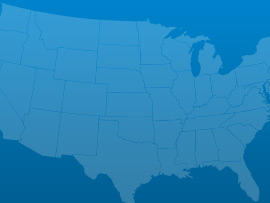The significant issues facing Oregon’s energy infrastructure are age, capacity and safety. For example, 93% of the country’s pipelines are more than 30 years old—some are even approaching 70 years old. The oldest and largest hydroelectric dam in Oregon, Bonneville, was first started in 1938. A large number of electrical transmission tower structures are reaching an age when the effects of atmospheric corrosion of the above-ground portions now requires significant increases in maintenance in order to safely remain in service. Oregon’s hydroelectric system faces operational limitations brought on by the need to manage fish habitat. The State’s permitting process creates long lead times in constructing new projects. While the committee recognizes the state’s leadership in renewable energy and conservation, all future needs cannot be met by these measures alone.
 Aviation
Aviation Dams and Levees
Dams and Levees Energy
Energy Inland Waterways
Inland Waterways Rail
Rail Solid Waste
Solid Waste Transit
Transit Transportation
Transportation Water and Wastewater
Water and WastewaterA: Exceptional, B: Good, C: Mediocre, D: Poor, F: Failing, ?: Incomplete
Each category was evaluated on the basis of capacity, condition, funding, future need, operation and maintenance, public safety, resilience, and innovation
Aviation
57 public-use airports
Bridges
431 of the 7,656 bridges are structurally deficient
Bridges
$77.20 million in bridge funds came from the Federal Highway Bridge Fund in 2011
Dams
74% of the state regulated dams have an Emergency Action Plan
Dams
61 high hazard dams
Drinking Water
$5.6 billion in drinking water infrastructure needs over the next 20 years
Energy
35.299 gigawatt-hours of renewable energy every year, ranking it 3rd
Hazardous Waste
14 sites on the National Priorities List
Inland Waterways
680 miles of inland waterways, ranking it 15th nationally
Levees
311 miles of levees
Ports
30.8 million short tons of cargo in 2012, ranking it 25th nationally
Public Parks
$21.0 million of unmet needs for its parks system
Rail
17 freight railroads covering 2,395 miles across the state, ranking 30th nationally by mileage
Roads
7,841 of the state’s 59,262 public roads are major roads, and 6% are in poor condition
Roads
$654.0 million a year in costs to motorists from driving on roads in need of repair, which is $236 /yr per motorist
Schools
$2.5 billion in estimated school infrastructure funding needs
Transit
123 million annual unlinked passenger trips via transit systems including bus, transit, and commuter trains
Wastewater
$3.8 billion in wastewater infrastructure needs over the next 20 years

March 03, 2017
As the President’s repeated in his address to Congress his pledge to dramatically increase infrastructure spending to the tune of $1 trillion, various Congressional Committees

March 01, 2017
On Tuesday night, President Trump addressed a joint-session of Congress for the first time in his presidency. Infrastructure was among the many issues he discussed.

February 28, 2017
U.S. motorists set a new record for vehicle miles travelled (VMT) in 2016, driving over 3.2 trillion miles, an increase of 70 billion miles from

February 17, 2017
Romantic dates, the Grammy awards and celebrating black history are not the only milestones of this week; the Oroville dam crisis in California and the